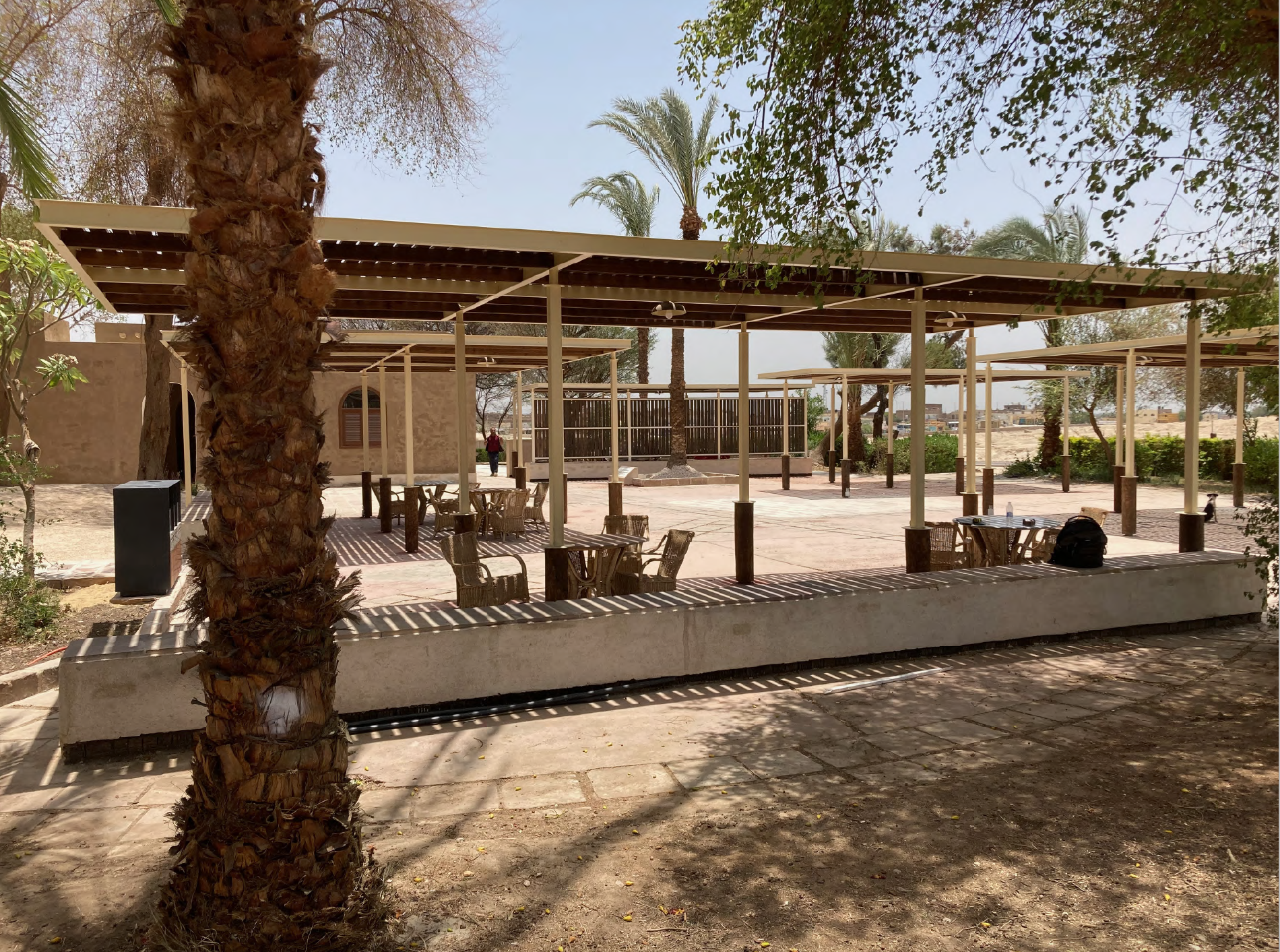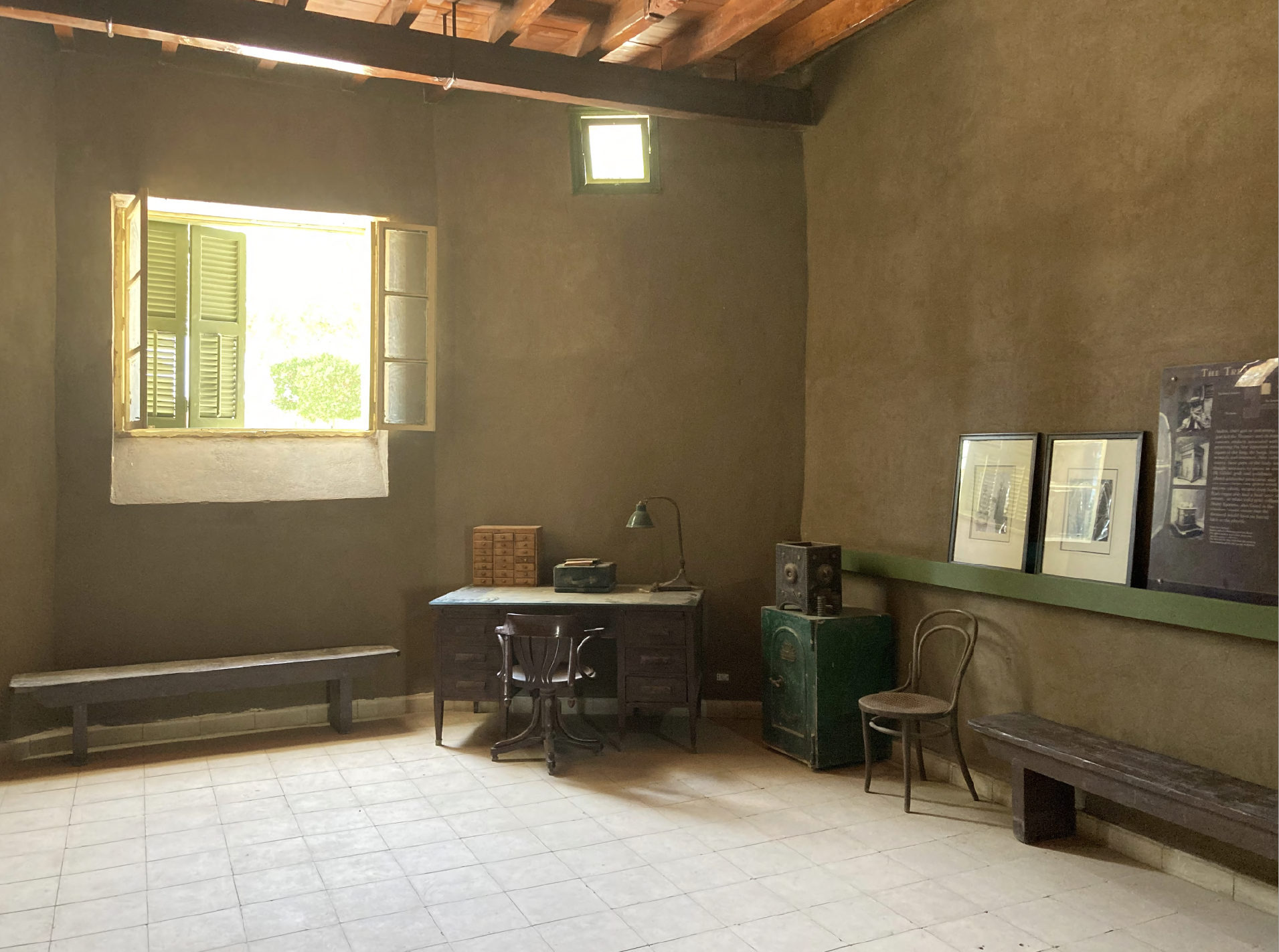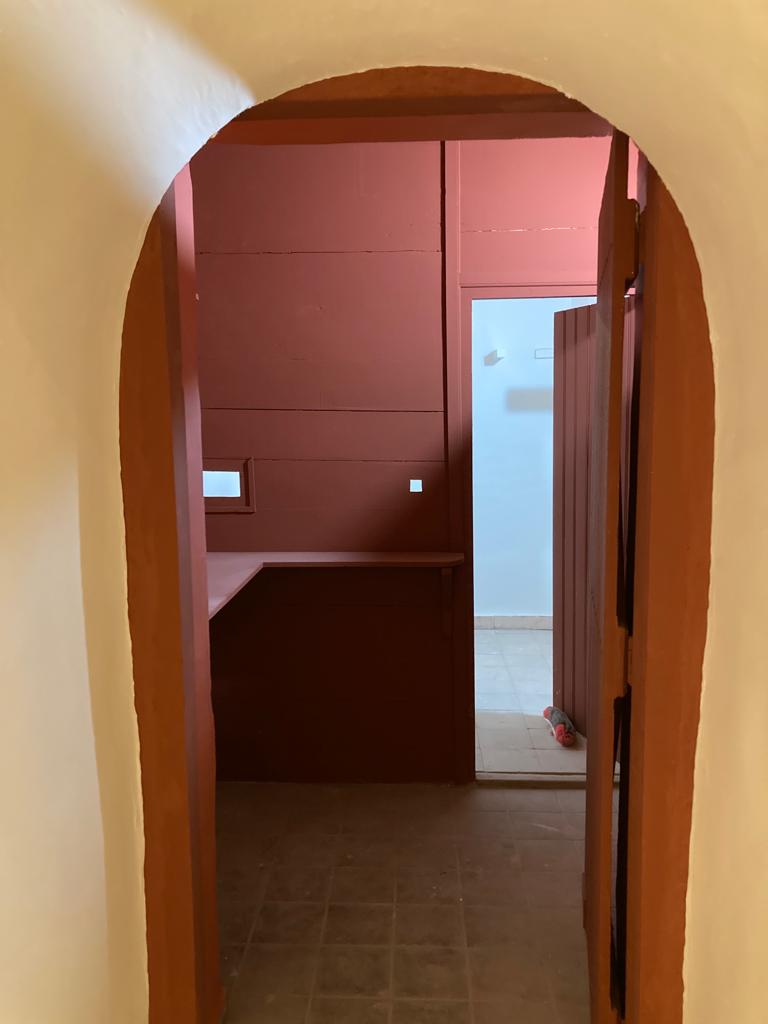- EraModern or 20th Century
- Project DirectorDr. Nicholas Warner
- LocationLuxor
- AffiliationAmerican Research Center in Egypt (ARCE)
- Project SponsorUSAIDAdina Lei Savin Family TrustThe Houston Museum of Natural ScienceThe Griffth InstituteBritish EmbassyChicago HouseThe Oriental InstituteThe Metropolitan Museum & The Worcester Art Museum
- Project Dates2022-2022
Written By: Dr. Nicholas Warner and Sally El Sabbahy
Despite the regular stream of tour buses and cars that ferry tourists to the Valley of the Kings on a daily basis, very few ever stop at the unassuming, one-story building that sits just to the north at the side of the road. Shrouded in overgrown gardens with a solitary dome emerging from its east wing, this building was the house of British archaeologist Howard Carter, who was residing in it at the time of his discovery of the tomb of Tutankhamun in 1922.
Carter House Exterior. Photo credit: ARCE Staff
After passing to the Egyptian Antiquities Department following Carter’s death, the house was modified for use as a resthouse for inspectors. It remained that way until 2009, when it was converted into a museum with an accompanying garden café by Egyptian architect Hani al-Miniawy. In 2014, Factum Arte installed a facsimile, or replica, of the tomb of Tutankhamun on the northern boundary of the property. As a ‘house-museum,’ Carter House proved to be a popular attraction on the Luxor tourist circuit, but over time a lack of consistent maintenance led to a deterioration in the house’s physical condition and its overall standard of presentation. This inconsistency included ad hoc repairs, the additions of objects and furniture that detracted from the house’s curated appearance, damage to objects and furniture due to inappropriate visitor behavior, the operating failure of a popular hologram of Carter (portrayed by an actor), the closure of the garden café, structural damage to the original mudbrick walls of the building as a result of overwatering from the garden, and a modern emulsion paint that had been applied over its exterior plaster.
In the summer of 2021, ARCE’s Cultural Heritage Projects Department submitted a proposal to the Supreme Council of Antiquities (SCA) and the Ministry of Tourism and Antiquities (MoTA) to conserve Carter House, restage its interior, and develop new on-site and digital visitor information. Approval was received for the project from the SCA and MoTA and work at Carter House began in February 2022. This consisted of a two-pronged approach: preliminary structural work and hard and soft landscaping was paired with the research and development of new visitor information and a renewed, historically accurate, presentation of the house’s interior. With respect to the former, the main focus was on repairing the damage caused by water and making alterations to the landscaping that will prevent similar damage occurring in the future. Old, broken subsurface waste pipes from the house were replaced, hedges and trees that were planted too close to the walls were removed, and a ‘water-free’ buffer zone was introduced. A new drip-feed pipe and sprinkler system was installed in the remaining garden area to avoid previous overwatering problems caused by running hoses.
Most critically, modern, inappropriate repairs and alterations made to the exterior of the building were removed. This included the existing plaster over which the emulsion paint had been applied. Interestingly, it is this paint that had given Carter House its ‘signature’ white appearance, a quality that while aesthetically appealing was not in line with the house’s historically unpainted mud brick appearance. After removal, a new plaster made from crushed mud bricks (sourced from the dumps of archaeological work in the area) and sand was applied to the exterior of the building, returning it to its original brown color. Around the house, new areas of sandstone paving, benches, and steel and timber shade structures were installed to improve facilities for both staff and visitors.
Installed seating and shade areas. Photo credit: Dr. Nicholas Warner
The desk inside the study. Photo credit: Dr. Nicholas Warner
Targeted preliminary work inside the house also took place, including the installation of new LED lighting (wired to antique dolly switches mounted on copper plates) and object vitrines. Considerable conservation work was undertaken in Carter’s study to return it to its original appearance based on historic photographs. In late May, all external and internal physical work to Carter House was paused on account of the extreme Luxor summer weather, with work resuming in September to complete the interior of the house in time for its reopening on November 4, 2022.
Given the historic events that Carter House has witnessed, considerable effort has been made by ARCE’s Cultural Heritage Projects Department to develop an engaging and representative visitor experience at the house. Previous on-site information was limited to English-only foam boards that provided brief information about Carter and his patron Lord Carnarvon. These were later supplemented by additional panels produced by Factum Arte providing detailed information about the tomb of Tutankhamun. Come November 4, 2022, visitors to Carter House will find bilingual Arabic and English information panels and historic images that contextualize the social and political circumstances that surrounded the discovery of the tomb of Tutankhamun and the many individuals, many Egyptian, that were involved in the management of the discovery. Additional information about what life was like on the West Bank in the early 20th century and interesting details of the functions of the house and its various specialized rooms, such as the photographic darkroom, will also be included. This new on-site information will be complemented by a digital tour of the house for self-guided or ‘armchair’ visitors.
Entrance to the Photographic Laboratory. Photo credit: Dr. Nicholas Warner
The project at Carter House is the result of countless hours of research and collaboration between ARCE’s Cultural Heritage Projects Department and a team of experts and institutions that includes Tom Hardwick, Egyptologist consultant, Mena Melad, historical consultant and founder of the Luxor Times, Chicago House, The Griffith Institute, the Metropolitan Museum of Art, the Peggy Joy Egyptology Library, the Oriental Institute, the Worcester Art Museum, and the British Embassy in Cairo. The project was also made possible with financing from the U.S. Agency for International Development (USAID and through generous donations from The Adina Lei Savin Family Trust and The Houston Museum of Natural Science.


